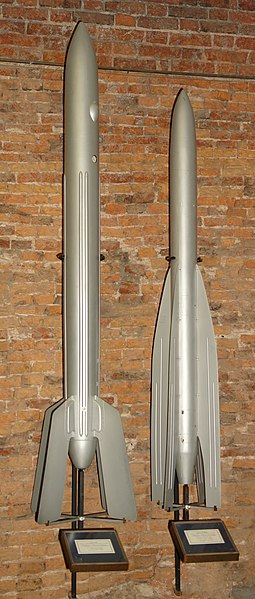The highest specific impulse chemical rockets use liquid propellants. They can consist of a single chemical or a mix of two chemicals, called bipropellants. Bipropellants can further be divided into two categories; hypergolic propellants, which ignite when the fuel and oxidizer make contact, and non-hypergolic propellants which require an ignition source.
Robert H. Goddard on March 16, 1926, holding the launching frame of the first liquid-fueled rocket
Friedrich Sander, Opel RAK technician August Becker and Opel employee Karl Treber (right to left) with liquid-fuel rocket-plane prototype at Opel Rennbahn in Rüsselsheim
A liquid-propellant rocket or liquid rocket utilizes a rocket engine burning liquid propellants. (Alternate approaches use gaseous or solid propellants.) Liquids are desirable propellants because they have reasonably high density and their combustion products have high specific impulse (Isp). This allows the volume of the propellant tanks to be relatively low.
Bipropellant liquid rockets are simple in concept but due to high temperatures and high speed moving parts, very complex in practice.
The NMUSAF's Me 163B Komet rocket plane
Titan II
Rocket 09 (left) and 10 (GIRD-09 and GIRD-X). Museum of Cosmonautics and Rocket Technology; St. Petersburg.






